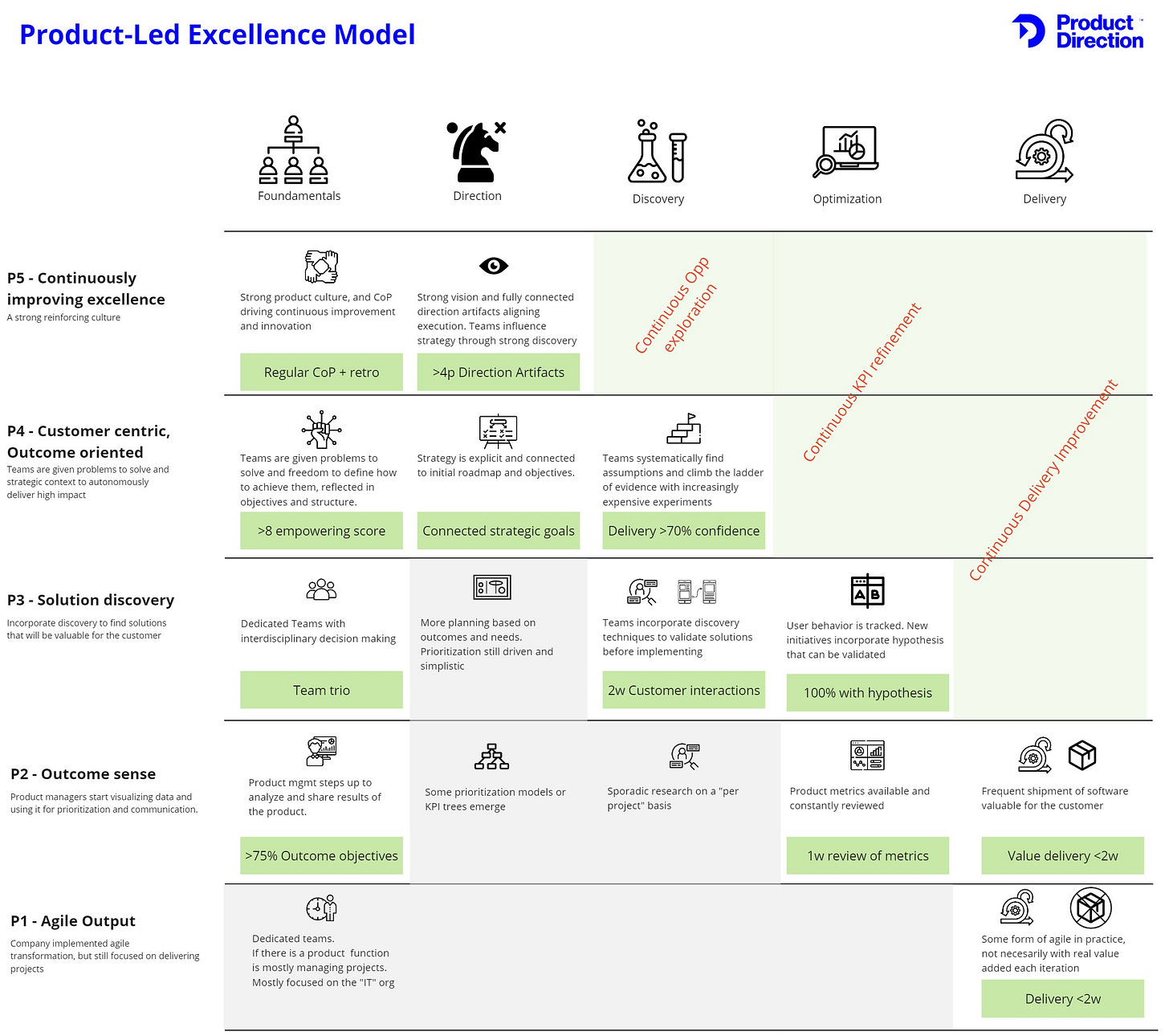Achieving Peak Performance: How to Identify the Most Critical Improvement Factor for Your Product Team
Hey! Nacho here. Welcome to Product Direction’s newsletter. If you have just subscribed, this is what you have missed:
The latest episode of 100 Product Strategies, with an end-to-end real-life example of creating innovation strategies.
Video class of the 3D Model to make sense of product practices
The Product-Led Excellence assessment to diagnose your practices.
These are part of the tools I’m using with the several teams and leaders I’m working with. If you want to learn more about it, contact me!
All companies and teams are in a constant struggle to get better.
If you are a product lead, it’s your job to push the product development ways of working to new heights in order to achieve increasingly superior results.
But our discipline is flooded with an ever-increasing set of tools and frameworks, each promising to remove our pains and deliver outstanding value.
So the question is: which practice do you choose to implement or improve to make your teams better?
In principle, the answer is simple: do not focus on which practice. Focus on the problem or limiting factor you are trying to overcome.
In practice, that is more nuanced. Identifying the limiting factor that, if removed, can help your team achieve higher results can be hard:
If you are a leader who has been in the same company for a while, you may not have seen in action what it takes to have world-class performance and, thus, not know where to start.
If you have been in a great company, and then jumped to a leadership role in a company that needs some transformation, you may not know what is the right sequence of steps to get the team from mediocre to great.
If you are new to leadership, you may not know how to assess the team situation to understand what is the most critical area for your team to improve.
This is where some modeling can help.
Defining a Maturity Model for product practices
Let me get it out of my chest: Maturity Models in any field can easily get ugly and be misused. You may be led to believe that adjusting some processes will guarantee results. This leads to two problems: putting process over results and ignoring that a big factor of how we work is based on our human relationships. But if you avoid these two traps, a model can help overcome the challenges mentioned in the previous section :)
This model builds on top of my previously shared “3D Model,” which helps organize product practices in the 3 big phases and understand the outcome expected in each of them.
So in the following preview, you may see I have used the columns to signal the stage of different practices:
Delivery: how we build.
Optimization: how we analyze performance and detect opportunities for short-term improvements on the existing product.
Discovery: how we solve problems and validate the right solutions to build.
Direction: how we decide and align on what opportunities to focus on.
Fundamentals: these are expected attributes of the product organization.
Building on my experience working with dozens of product teams over the last decade, I divided the stages into 5 steps that build on top of each other:
Agile Output: usually companies who did some “agile transformation” but are still focused on releasing features.
Outcome sense: when teams start measuring results, identifying optimization opportunities, and evaluating the value of their new deploys.
Solution discovery: teams start experimenting to validate the best solution before building.
Customer-centric, Outcome-oriented: at this stage, we are given problems to solve, we detect opportunities based on customer needs, and we constantly gather evidence to strategize the best ways to deliver value and generate business impact.
Continuously improving: those teams who achieved nirvana but are still constantly pushing the frontiers of how they work to achieve great results.
Want more? Next week, only subscribers of my newsletter will receive a video course going in detail through each stage, with tips to assess your situation and select the best next action to achieve peak performance.



